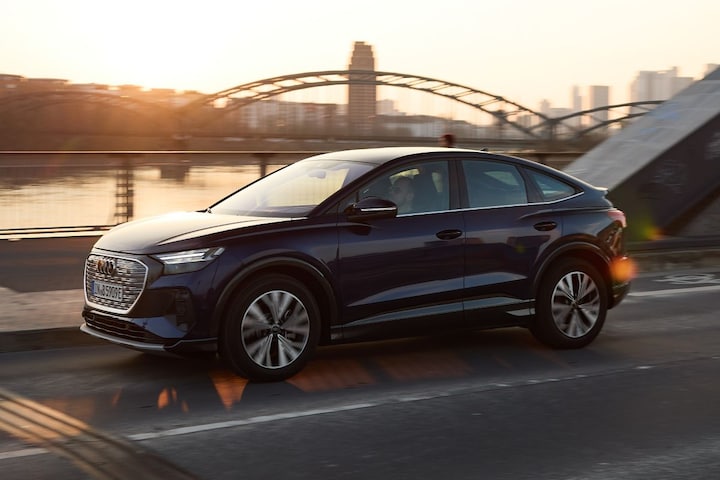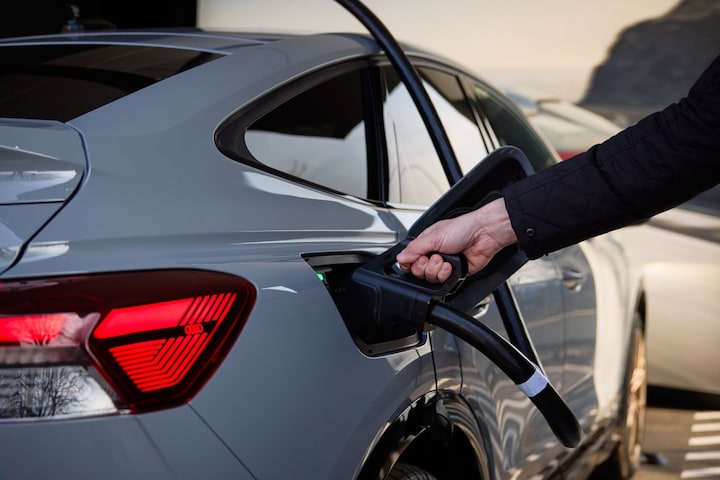Technically thoroughly overhauled, appearance unchanged
After the Skoda Enyaq and the Volkswagens ID4 and ID5, the technically largely identical Audi Q4 undergoes improvements to the drivetrain. Much more power means a new nameplate, while the Audi engineers also took a closer look at the chassis.
What exactly has changed on the Audi Q4?
The thing that unites the aforementioned Volkswagens, Skoda and Audi is called the MEB platform. The ‘Modularer E-Antriebs Baukasten’ basis is the pivot on which electrification drives the Volkswagen brand, but for Audi it is only one of the four (!) electric platforms in the range. A very important one, because the relatively compact Q4 is by far the most popular EV in the range. The Q4 arrived in 2021, after the ID4 and Enyaq. Audi thinks it is still too early for a facelift, but you can bet that it will come in the foreseeable future. Until then, the technically robust Q4 is indistinguishable from the old one. There is one exception to this: the type plate. The Q4 40 e-tron makes way for the Q4 45 e-tron and the Q4 50 e-tron is replaced by the Q4 55 e-tron. Anyone who knows that the two-digit number indicates a place on the wealth ladder can figure out what that means: both versions gain power.

How much power does the Q4 have now?
A robust electric motor with stronger magnets boosts the rear-wheel drive 45 to 286 hp, compared to 204 for the ‘old’ 40. The torque also benefits and goes from 310 to 545 Nm. The 55 has four-wheel drive, benefits from the same modified rear engine and produces 340 hp, compared to 299 for the 50 that preceded it. Between these flavors there is also a 45 quattro, which combines the four-wheel drive of the 55 with the power of the lower variant. This makes this version also somewhat more powerful than its direct predecessor (265 hp), but that is not enough for a name change with the 45 quattro. Basic version 35 with its smaller battery has disappeared for a while, but will soon return in barely changed form.
What about charging?
Before that happens, we would like to hit the road with the 45. As the least expensive way to get home with the large battery, this is actually the most interesting of the series. The difference in power is immediately noticeable. Not that the 40 was lethargic or slow, but with a whopping 2,145 kg car weight, a little extra is never wasted. The Q4 is now seriously smooth even in this rear-wheel drive form, with a 0-100 time of 6.7 seconds. Perhaps more importantly, the new engine is also more efficient than the old one. With an unchanged battery capacity of 77 kWh, this results in approximately 15 kilometers more range, for a total of 539 WLTP kilometers. Charging is also faster according to Audi, but not significantly. The peak at the fast charger is as usual at 135 kW, but due to better temperature management, this high speed should now be approachable over a longer period. Interesting detail: the quattro versions also have 77 kWh, but peak at 175 kW. The reason is unexpected: the four-wheel drives have a battery pack from LG, lesser versions have a slightly different package from the Chinese CATL.

Are there any further changes?
For greater differentiation from Volkswagen and Skoda, the steering has been overhauled, as has the chassis. It is available in three variants: a standard suspension, a slightly lowered sports suspension and a version with adaptive dampers. We drive the adaptive variant and although the difference between the hardest and softest mode is palpable, this only applies to a very limited extent to the difference between the new and the ‘old’ Q4. The car still dribbles over short bumps in a somewhat uncomfortable manner, which is not very surprising given the high weight and the ditto body. Positives are the very small turning circle, the good build quality, the relatively playfully designed interior and the great seating position. Especially compared to Volkswagen’s ID models, the ergonomics in the Q4 are a huge advantage, with separate buttons for climate control and seat heating, among other things. The latter is standard and since the update this also applies to, for example, the electric tailgate, while the temporarily disappeared panoramic roof is now available as an option again. With that extra equipment, subtly updated safety equipment and the quite significant drivetrain upgrade, the Q4 offers more value for money than before, because the starting price is at the same level at just under 55 grand.
– Thanks for information from Autoweek.nl